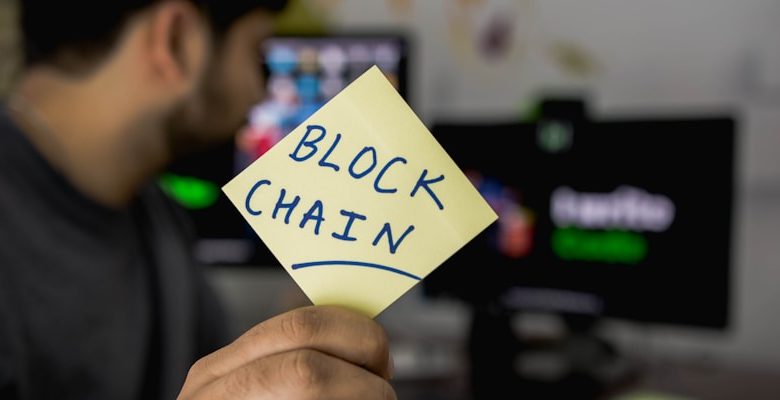Understanding the Risks of 51% Attacks in Blockchain

- Exploring the concept of 51% attacks in blockchain technology
- The potential dangers and implications of a successful 51% attack
- Examples of past 51% attacks and their impact on various cryptocurrencies
- Measures that can be taken to mitigate the risks of a 51% attack
- How regulatory bodies are addressing the threat of 51% attacks in the blockchain space
- The role of decentralization in safeguarding against 51% attacks in blockchain networks
Exploring the concept of 51% attacks in blockchain technology
One of the key concepts in blockchain technology that has been a cause for concern among developers and users alike is the risk of 51% attacks. A 51% attack occurs when a single entity or group of entities controls more than half of the computing power on a blockchain network, allowing them to manipulate transactions and potentially double-spend coins.
These attacks can have serious implications for the security and integrity of a blockchain network. By controlling the majority of the network’s computing power, an attacker can prevent new transactions from being confirmed, reverse transactions they send while in control, and prevent other miners from mining valid blocks. This can lead to a loss of trust in the network and undermine the decentralized nature of blockchain technology.
There are several ways in which blockchain networks can protect themselves against 51% attacks, such as implementing consensus algorithms like Proof of Work or Proof of Stake, which require network participants to prove they have performed a certain amount of computational work to add a new block to the blockchain. Additionally, some networks have implemented mechanisms to make it more difficult for a single entity to control a majority of the network’s computing power, such as limiting the number of coins a single entity can mine.
The potential dangers and implications of a successful 51% attack
One of the most critical aspects to consider when discussing 51% attacks is the potential dangers and implications that come with a successful attack. If a malicious actor gains control of over half of a blockchain network’s mining power, they have the ability to manipulate the network in various ways that can have severe consequences.
One of the main dangers of a successful 51% attack is the ability to double spend cryptocurrencies. This means that the attacker can spend the same coins twice, leading to a loss of trust in the affected blockchain network. This could have a ripple effect on the entire cryptocurrency ecosystem, causing widespread panic and a decrease in adoption.
Furthermore, a successful 51% attack can also lead to a loss of network integrity. The attacker can prevent new transactions from being confirmed, reverse transactions that were completed during the attack, and even prevent other miners from mining new blocks. This can disrupt the normal functioning of the blockchain network and undermine its security.
Another implication of a successful 51% attack is the centralization of power within the network. If a single entity or group is able to control the majority of the mining power, they essentially have control over the entire network. This goes against the decentralized nature of blockchain technology and can lead to censorship, manipulation, and other malicious activities.
In conclusion, the potential dangers and implications of a successful 51% attack are significant and should not be underestimated. It is crucial for blockchain projects to implement robust security measures to protect against such attacks and maintain the trust and integrity of their networks.
Examples of past 51% attacks and their impact on various cryptocurrencies
Several cryptocurrencies have experienced 51% attacks in the past, with significant impacts on their networks and communities. One example is Ethereum Classic, which suffered multiple 51% attacks in 2020. These attacks resulted in double-spending and caused the network to lose credibility among investors and users.
Another example is Bitcoin Gold, which fell victim to a 51% attack in 2018. The attacker was able to reverse transactions, leading to financial losses for exchanges and users. This incident highlighted the vulnerability of smaller blockchain networks to such attacks.
Verge is also one of the cryptocurrencies that have faced a 51% attack. In 2018, attackers exploited a vulnerability in Verge’s network, resulting in the mining of unauthorized blocks. This caused a loss of confidence in the project and a decline in its value.
These examples underscore the importance of understanding the risks associated with 51% attacks in blockchain technology. It is crucial for cryptocurrency projects to implement robust security measures to protect their networks from such threats and maintain the trust of their users and investors.
Measures that can be taken to mitigate the risks of a 51% attack
One way to protect a blockchain network from the threat of a 51% attack is to increase the network’s hashing power. By having more miners actively participating in the network, it becomes more difficult for any one entity to control the majority of the computational power. This can help to deter potential attackers who may be looking to manipulate the blockchain for their own gain.
Another measure that can be taken is to implement a consensus algorithm that is resistant to such attacks. For example, some blockchains use proof-of-stake rather than proof-of-work, which requires validators to prove ownership of a certain amount of cryptocurrency in order to mine blocks. This can make it more costly for an attacker to attempt a 51% attack, as they would need to acquire a significant portion of the cryptocurrency in order to do so.
Regularly monitoring the network for any signs of suspicious activity can also help to mitigate the risks of a 51% attack. By keeping a close eye on the blockchain’s performance and looking for any unusual patterns, network administrators can quickly respond to any potential threats and take action to prevent an attack from being successful.
Implementing multi-signature wallets can also help to add an extra layer of security to the blockchain network. By requiring multiple private keys to authorize transactions, it becomes more difficult for a single entity to gain control over the network and carry out a 51% attack. This can help to protect the integrity of the blockchain and ensure that transactions are secure.
Overall, it is important for blockchain networks to be proactive in implementing measures to protect against 51% attacks. By increasing hashing power, using resistant consensus algorithms, monitoring network activity, and implementing multi-signature wallets, network administrators can help to safeguard the integrity of the blockchain and prevent malicious actors from taking advantage of vulnerabilities.
How regulatory bodies are addressing the threat of 51% attacks in the blockchain space
Regulatory bodies around the world have started taking notice of the growing threat posed by 51% attacks in the blockchain space. These attacks have the potential to undermine the security and integrity of decentralized networks, leading to a loss of trust among users and investors. In response to this emerging risk, regulators have been exploring various strategies to address the issue and protect the interests of stakeholders.
One of the key ways in which regulatory bodies are tackling the threat of 51% attacks is through increased oversight and monitoring of blockchain networks. By keeping a close eye on the activities of miners and network participants, regulators can detect any suspicious behavior or concentration of mining power that could potentially lead to an attack. This proactive approach allows regulators to intervene quickly and implement measures to prevent malicious actors from gaining control of a majority of the network’s computing power.
In addition to surveillance and monitoring, regulatory bodies are also considering the implementation of new rules and standards to enhance the security of blockchain networks. These regulations may include requirements for greater transparency and disclosure from network participants, as well as guidelines for managing and mitigating the risks associated with 51% attacks. By establishing clear expectations and best practices for blockchain operators, regulators aim to create a more secure and resilient environment for decentralized systems to thrive.
Furthermore, some regulatory bodies are exploring the possibility of imposing penalties and sanctions on entities that engage in or facilitate 51% attacks. By holding bad actors accountable for their actions, regulators hope to deter future attacks and promote a culture of compliance within the blockchain industry. These enforcement measures send a strong signal that malicious behavior will not be tolerated and that those who seek to exploit vulnerabilities in decentralized networks will face consequences for their actions.
Overall, regulatory bodies are taking a proactive and multi-faceted approach to addressing the threat of 51% attacks in the blockchain space. By combining surveillance, regulation, and enforcement, regulators aim to create a more secure and resilient ecosystem for blockchain technology to flourish. Through these efforts, regulators seek to safeguard the integrity of decentralized networks and protect the interests of users, investors, and other stakeholders in the evolving digital economy.
The role of decentralization in safeguarding against 51% attacks in blockchain networks
Decentralization plays a crucial role in protecting blockchain networks from 51% attacks. By distributing control and power among a diverse network of participants, the risk of a single entity gaining majority control and manipulating the network is significantly reduced. When a blockchain network is decentralized, it becomes more resilient and secure against malicious actors attempting to control the majority of the network’s computing power.
One of the key advantages of decentralization in safeguarding against 51% attacks is that it makes it much more difficult for a single entity to amass enough computing power to overpower the rest of the network. This is because in a decentralized network, there are numerous independent nodes that work together to validate transactions and secure the network. As a result, even if a malicious actor were to gain control of a significant portion of the network, they would still need to contend with the combined computing power of the remaining nodes.
Furthermore, decentralization helps to ensure that no single entity has the ability to make decisions unilaterally. In a decentralized blockchain network, decisions are typically made through a consensus mechanism that requires agreement from a majority of participants. This consensus mechanism acts as a safeguard against potential attacks, as it makes it extremely difficult for any one entity to manipulate the network for their own gain.
Overall, decentralization is a critical component in the security and integrity of blockchain networks. By distributing control and decision-making power among a diverse group of participants, decentralization helps to protect against the risk of 51% attacks and other malicious activities. As blockchain technology continues to evolve and grow, maintaining decentralization will be essential in ensuring the long-term viability and trustworthiness of blockchain networks.



